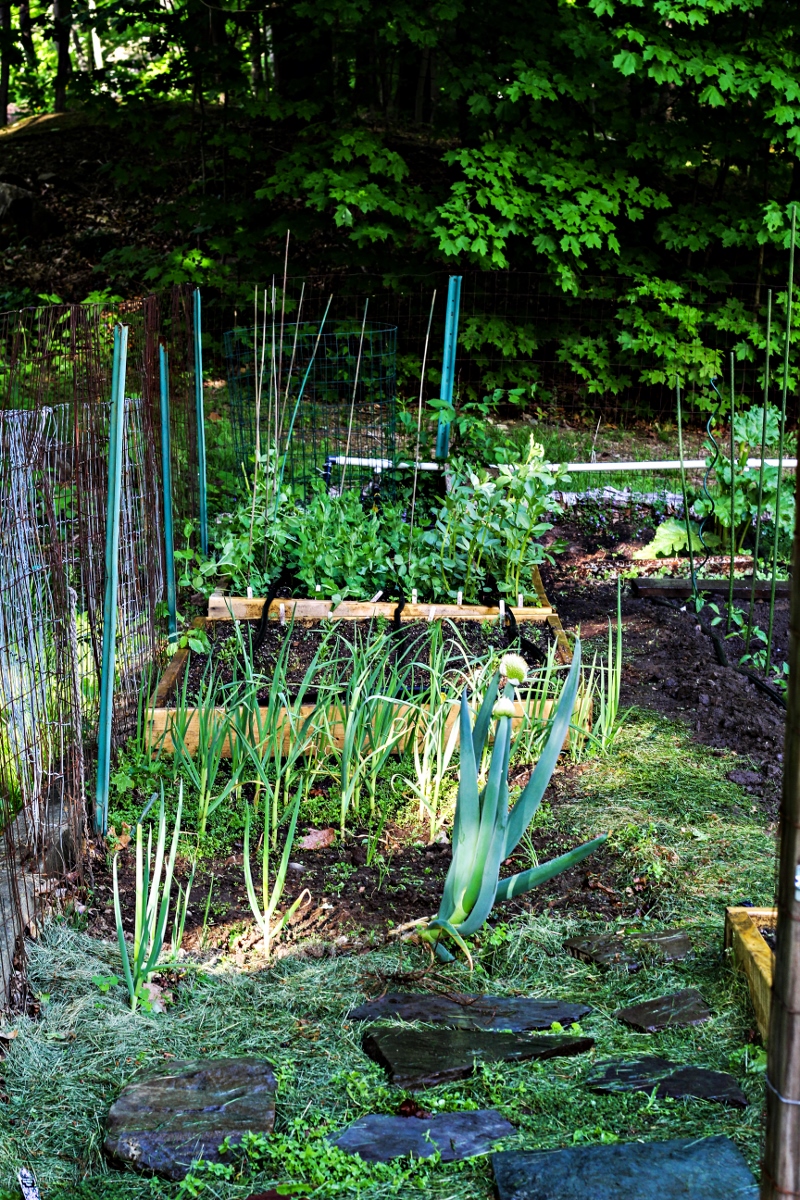March in the garden means bleached out days where the sun feels like a forgotten gift from another lifetime. It means anxiously checking the brown earth for signs of green, and battling the elements to provide your baby seedlings with what they’ll need to survive these first temperamental weeks. It means frozen fingers and standing in the mud, turning the ground over and over, and daydreaming of those seemingly far off first tastes of fresh peas.
 1) The treehouse/wood-shed; 2) Trevor on pruning day; 3) Blank canvas; 4) Dormant fruit trees; 5) Turning over soil; 6) Last year’s straggler carrots; 7) Dad with the wheelbarrow; 8) Planting peas
1) The treehouse/wood-shed; 2) Trevor on pruning day; 3) Blank canvas; 4) Dormant fruit trees; 5) Turning over soil; 6) Last year’s straggler carrots; 7) Dad with the wheelbarrow; 8) Planting peas
April in the garden means the first signs of life and color, rhubarb poking it’s bright red nubs through the ground, blossoms erupting on cherry and apple trees, a world of hope held within each small spot of color that emerges from the gray winter world. The weather is still temperamental, and the glass enclosures you’ve built for your tomato starts aren’t enough to protect them from a few hard freezes. But it’s supposed to be spring, you think, staring, heartbroken, at the scraggly and desperate plants that a week ago were so green and full of promise. You know, though, that this is what spring means. Spring in New England.
 1) Peach blossoms ready to open; 2) First signs of rhubarb; 3) Dad, enjoying the sun; 4) Planting broccoli; 5) Peas sprouts; 6) Transporting seedlings
1) Peach blossoms ready to open; 2) First signs of rhubarb; 3) Dad, enjoying the sun; 4) Planting broccoli; 5) Peas sprouts; 6) Transporting seedlings
May in the garden means a flush of green, and this year at least, a corresponding flush of rain. Heat-loving plants – tomatoes, peppers, eggplants – get a slow start, but the peas and beans and broccoli are tangled from growing so fast. Weeds are already waging their war on your precious plants, seemingly popping up overnight. Bugs, too, make their debut, and once again you are astonished at how quickly a forest of caterpillars can munch through leaves. Squishing the odd one here or there gives you an unreasonable amount of satisfaction. On the bright side, you can now harvest a few stalks of rhubarb, and it seems it will only be a few more weeks before you are lugging baskets full of fat pea pods into the kitchen for shucking.
1) Peas and fava beans; 2) The orchard in green; 3) Starts to be planted; 4) New grape growth
Last year was the first year we attempted gardening – you can read about it here, here and here. We started out small, with a 2’x8′ raised bed in my backyard, but quickly overran that space with a mess of too-small pots containing tomatoes, grapes, watermelon, and fruit trees, all fighting one another over the sunlight. At the end of last summer, we started working in the vegetable patch at my parent’s house, and my dad agreed to let us share the space with him this year. Now, most of our efforts are focused on that 20’x30′ vegetable garden, the dozen or so fruit tress up the hill, and the berry patch, with it’s productive rows of raspberries, blueberries, grapes, and strawberries. We’re there almost every weekend, with a full day’s worth of work cut out for us. I hope we don’t tire of it. And I hope that at least some of our plants do better than we expect – I think we started to learn last year not to expect too much when it comes to the fickle ways of gardening. And last, I’m excited to share all the adventures and food with you, here.
0


What a beautiful transition through the seasons!
a garden always requires hard work, but the rewards worth every drop of work; you have a beautiful garden :)
regards, Oana